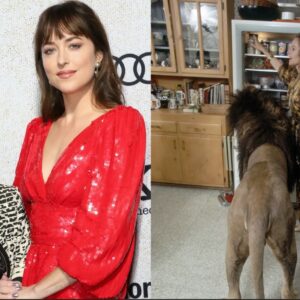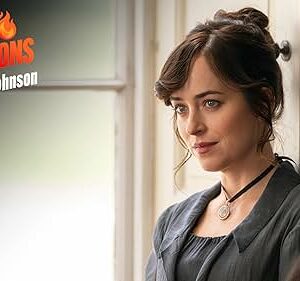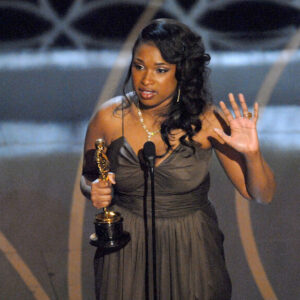Ryan Gosling’s performance in La La Land is not only memorable for his nuanced acting but also for his impressive dance routines, which caught many by surprise. Known more for his dramatic, brooding roles in films like Drive and Blue Valentine, Gosling reinvented himself as a fully-fledged dancer and singer for this modern musical. His portrayal of Sebastian Wilder, a struggling jazz musician with dreams of opening his own club, required a transformation not just in character but in physicality. Gosling’s ability to master the art of dance in such a short time is a testament to his unrelenting dedication and versatility as an actor, traits that have made him one of Hollywood’s most respected performers.
A Career Turned On Its Head: From Dramatic Roles to Musical Stardom
Before La La Land, Ryan Gosling was widely recognized for his intense, dramatic performances. His roles often showcased his capacity to communicate emotion with a single glance, a tilt of his head, or an understated expression. He had built a career on quiet strength and subtlety, never relying on overt flamboyance. So when the announcement came that Gosling had been cast in La La Land, many were intrigued—and some skeptical—about whether he could make the transition into a genre that demands not just emotional depth but also physical dynamism.
Director Damien Chazelle, known for his exacting standards (as seen in his previous film Whiplash), was not looking for Broadway-level precision in his leads, but rather authenticity. Chazelle wanted the heart of the performances to shine through the imperfections. For Gosling, who had no formal training in dance or musical theater, the challenge was twofold: he needed to learn how to dance convincingly, and he needed to imbue every movement with the same emotional resonance he had perfected in his dramatic roles.
Gosling’s Background and Preparation: A Crash Course in Dance
Unlike his co-star Emma Stone, who had some musical experience from her stage work in Cabaret, Gosling approached La La Land with a clean slate—no prior dance training, no experience in musical performances. It was a daunting prospect, especially given the film’s heavy reliance on choreography and song to advance the narrative. To prepare, Gosling was paired with Mandy Moore (not the singer, but the celebrated choreographer from So You Think You Can Dance). Moore’s task was to turn Gosling into a believable dancer capable of carrying the film’s sweeping musical numbers.
For months, Gosling committed himself to an intense regimen of dance training, focusing on tap, ballroom, and jazz. While many actors may have relied on body doubles for the more intricate sequences, Gosling was insistent on performing the dances himself. “I didn’t want to fake it,” Gosling later said in interviews. “I felt like it was important to bring that authenticity, even if it wasn’t perfect.” This speaks to his work ethic—a characteristic that has underscored much of his career.
What’s particularly impressive about Gosling’s preparation is that he was not just learning to move; he was learning to move with meaning. Every step, every turn had to reflect his character’s journey—whether it was the lighthearted joy of the iconic tap sequence in “A Lovely Night” or the melancholy resignation in the closing waltz of “Epilogue.”
Dedication to the Craft: Beyond the Script
Gosling’s journey from a non-dancer to a credible performer in La La Land wasn’t just about mastering choreography. It was about understanding how to let the dance speak as much as his dialogue. Every day, Gosling devoted hours to perfecting his moves with co-star Emma Stone, ensuring that their chemistry was as evident in their movements as it was in their on-screen conversations. This bond was critical, as their dance scenes had to convey a deep, unspoken connection between their characters.
One of the most challenging sequences for Gosling was the tap dancing number “A Lovely Night,” set against the backdrop of the Hollywood hills. The scene’s charm comes from its apparent spontaneity, but in reality, it was anything but effortless. The sequence required precise footwork and exact synchronization with Stone. As the scene plays out, the pair exchange witty banter while dancing across the screen with an ease that belies the complexity of the choreography. For Gosling, this was a culmination of weeks of practice—each tap, spin, and leap painstakingly rehearsed until it looked like an impromptu expression of joy.
Blending Acting and Dance: The Subtlety of Movement
What makes Gosling’s performance truly special in La La Land is his ability to blur the lines between acting and dancing. For many actors, a dance scene can feel like an interlude, a momentary break from the emotional core of a film. But for Gosling, the dances in La La Land are extensions of his character. In the planetarium scene, for instance, when Sebastian and Mia float through the stars, their movements become a poetic reflection of their growing bond. The fluidity of their waltz—ethereal and dreamlike—mirrors the surreal nature of their relationship, a love that seems destined yet ephemeral.
Gosling’s performance shines not because he is a technically flawless dancer, but because he imbues every movement with emotional weight. In moments of exuberance, like the tap number on Mulholland Drive, his dancing is quick and sharp, filled with energy. In moments of reflection, such as the film’s final waltz, his movements are more subdued, almost hesitant, as if he is grappling with the loss of what could have been. This emotional layering is where Gosling truly excels. He understands that for La La Land, the dances are not just about choreography; they are about telling the story in a way that words alone cannot.
The Impact of His Effort: A New Era of Modern Musicals
The success of La La Land is due in no small part to Ryan Gosling’s determination and hard work. His commitment to learning dance from scratch brought a rawness to the film that might have been lost with a more polished performer. Audiences connected with his vulnerability—both in his character’s emotional journey and in the imperfect yet charming dance sequences. Gosling was never meant to be a Broadway star, but his earnest effort resonated in a way that polished perfection never could.
It’s worth noting that Gosling’s work on La La Land extends beyond just the dance sequences. His preparation also involved learning to play the piano, which he did entirely on his own, without the use of hand doubles. This attention to detail further emphasizes Gosling’s dedication to the role, enhancing the authenticity of his portrayal of Sebastian. His piano performances, like his dancing, were not about technical prowess but about conveying the heart of a character who lives and breathes music.
The film went on to receive widespread acclaim, winning numerous awards and cementing its place as a modern classic in the genre of musicals. Gosling’s performance was a significant part of that success, earning him a Golden Globe for Best Actor in a Musical or Comedy and an Academy Award nomination. But beyond the accolades, it’s clear that Gosling’s work on La La Land set a new standard for what audiences expect from actors in musical films. His efforts helped to usher in a new era where emotional authenticity is just as important as technical skill in musical performances.
Conclusion: An Inspiring Transformation
Ryan Gosling’s transformation for La La Land is a reminder of what it means to be truly committed to one’s craft. His journey from a non-dancer to a performer who could carry a film filled with complex choreography is nothing short of remarkable. But what sets Gosling apart is not just his ability to learn new skills, but his capacity to infuse those skills with emotional depth. Every dance move, every piano note in La La Land is a reflection of his character’s soul, a testament to Gosling’s ability to merge physicality and emotion seamlessly.
His performance in La La Land serves as an inspiring example for both actors and audiences alike. It shows that with hard work, dedication, and a willingness to step outside of one’s comfort zone, it’s possible to achieve the extraordinary. Gosling’s journey to mastering dance is not just a personal triumph but a testament to his status as one of Hollywood’s most versatile and hard-working actors. His work on La La Land continues to resonate, proving that sometimes, it’s not about being perfect—it’s about being authentic.





